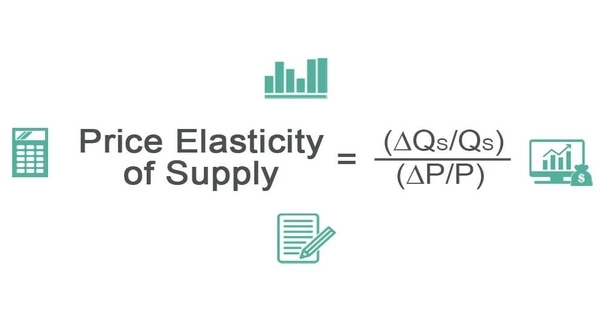The price elasticity of supply (PES or Es) is an economic measure that shows the responsiveness, or elasticity, of the quantity supplied of a good or service to a change in its price. The elasticity is expressed numerically and is defined as the percentage change in quantity supplied divided by the percentage change in price.
The price elasticity of supply measures a good or service’s responsiveness to a change in its market price. The supply of a good increase when its price rises, according to basic economic theory. When the price of a good falls, so does its supply.
When the elasticity is less than one, the supply is said to be inelastic; when it is greater than one, the supply is said to be elastic. A zero elasticity indicates that the quantity supplied does not change in response to a price change: the good is “fixed” in supply. Such goods frequently lack a labor component or are not produced, limiting short-term expansion prospects. The good is said to be unit-elastic if the elasticity is exactly one.
The price elasticity of supply measures how quickly producers adjust their output levels in response to price changes. The number of goods supplied may differ from the quantity produced in the short term because manufacturers will have stocks that they can build up or deplete. According to economic theory, when prices rise, producers will want to increase their output in order to sell more at higher prices. If producers are unable to meet rising demand, prices may continue to rise as supply cannot keep up.
The responsiveness of quantity supplied to a change in price is measured by the price elasticity of supply. Because firms typically have limited production capacity, supply elasticity is high at low levels of quantity supplied and low at high levels of quantity supplied. Firms typically have significant capacity available for use at low levels of quantity supplied, so small price increases make it profitable for firms to begin using this idle capacity.
As a result, the responsiveness of quantity supplied to price changes is high in this region of the supply curve. However, as capacity is depleted, increasing output necessitates additional capital investment (for example, plant, and equipment). Since the price must rise substantially to cover this additional expense, supply becomes less elastic at high levels of output.
















